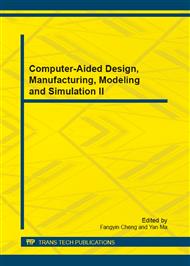p.492
p.496
p.501
p.505
p.509
p.514
p.519
p.527
p.532
Primary Study on the Model of Dispersal of the Thermobaric Explosive
Abstract:
The experimental and theoretical study on the rapid explosive dispersal process model of a thermobaric explosive has been carried out. Detonation of a thermobaric explosive generates a blast wave followed by a complex supersonic gas-solid fluid, which the additive fuel, aluminum particles, in some cases, might catch up to and penetrate the leading shock front. The developing history of the explosive fireball is analyzed and the complex physical mechanisms are primarily determined, and the influence of the critical parameters such as the mass ratio of explosive and fuels and the fuel properties to dispersal radius and maximum dispersal velocity are estimated. The theoretical expression of maximum dispersal velocity of solid aluminum fuels was deduced and the mathematic expression of explosive dispersal radius with time was deduced. Overall, an excellent agreement is reached between the experimental and theoretical model results.
Info:
Periodical:
Pages:
509-513
Citation:
Online since:
December 2012
Authors:
Keywords:
Price:
Сopyright:
© 2013 Trans Tech Publications Ltd. All Rights Reserved
Share:
Citation:


